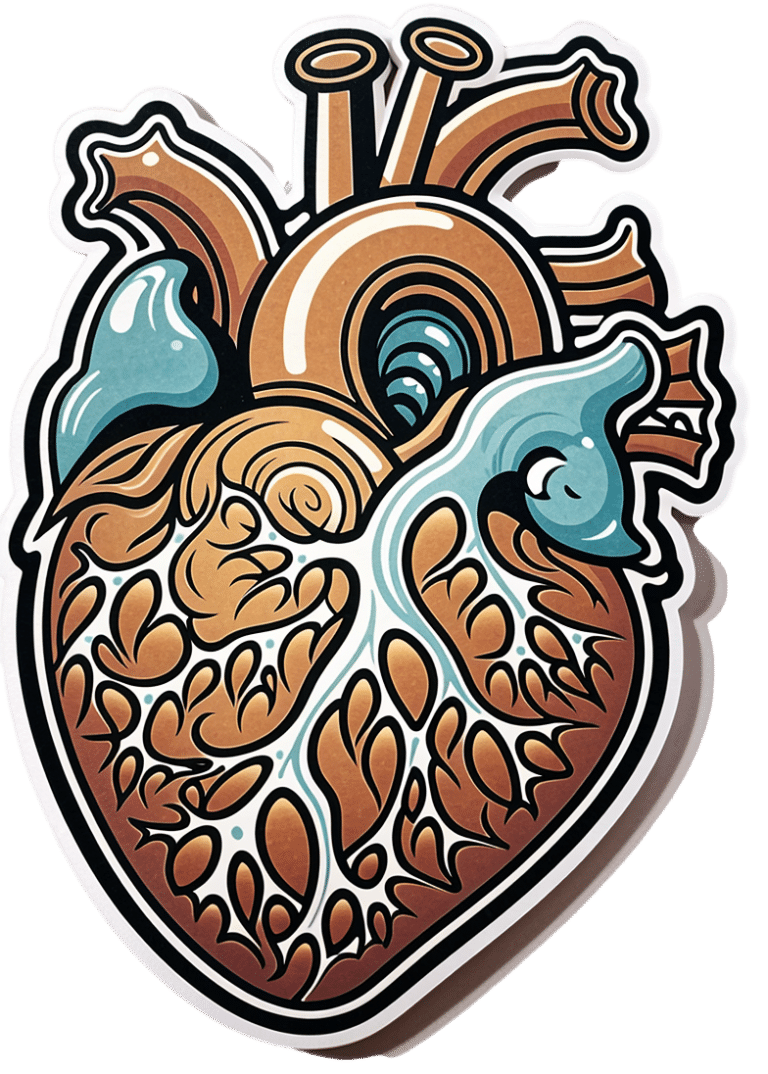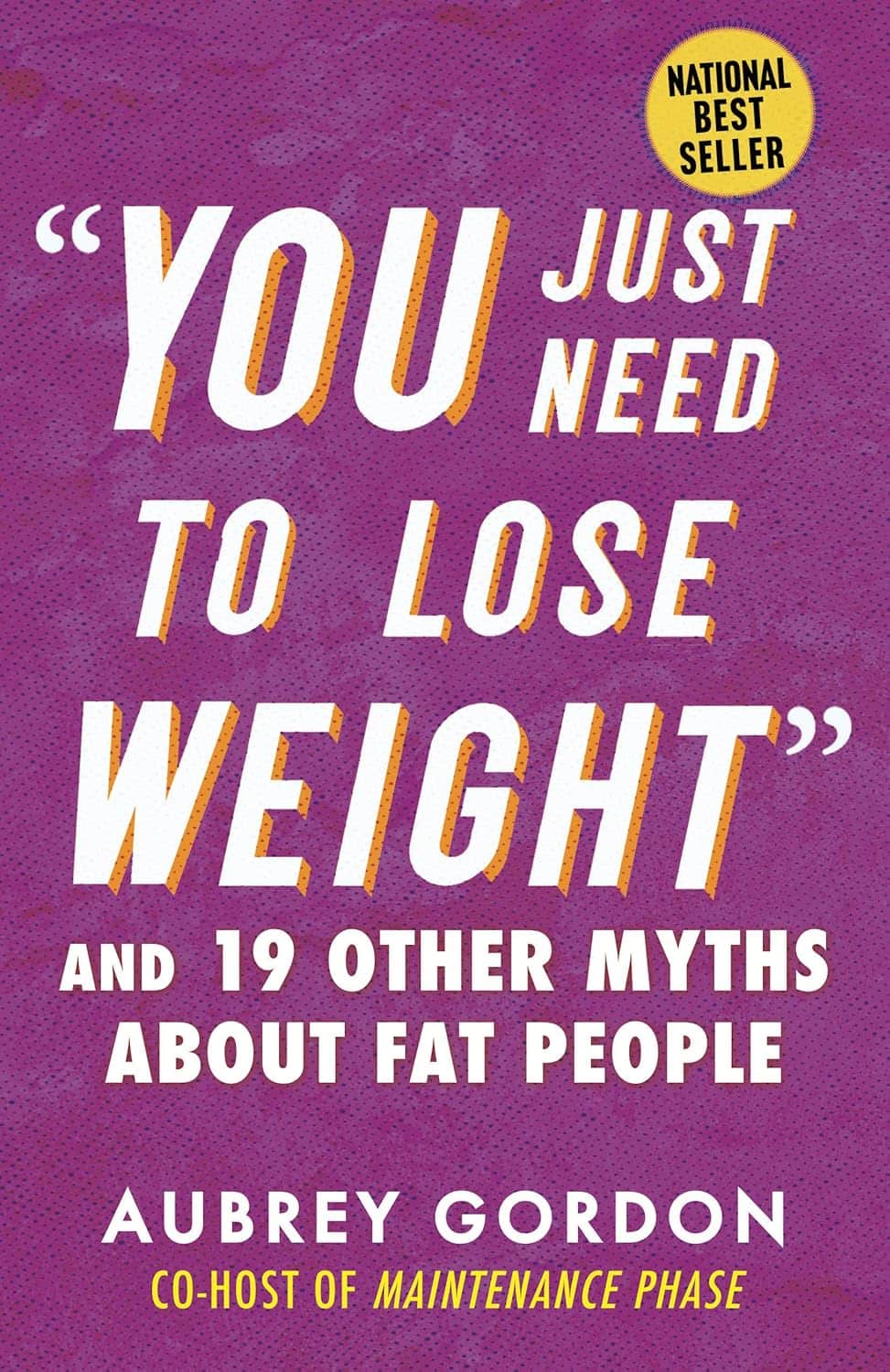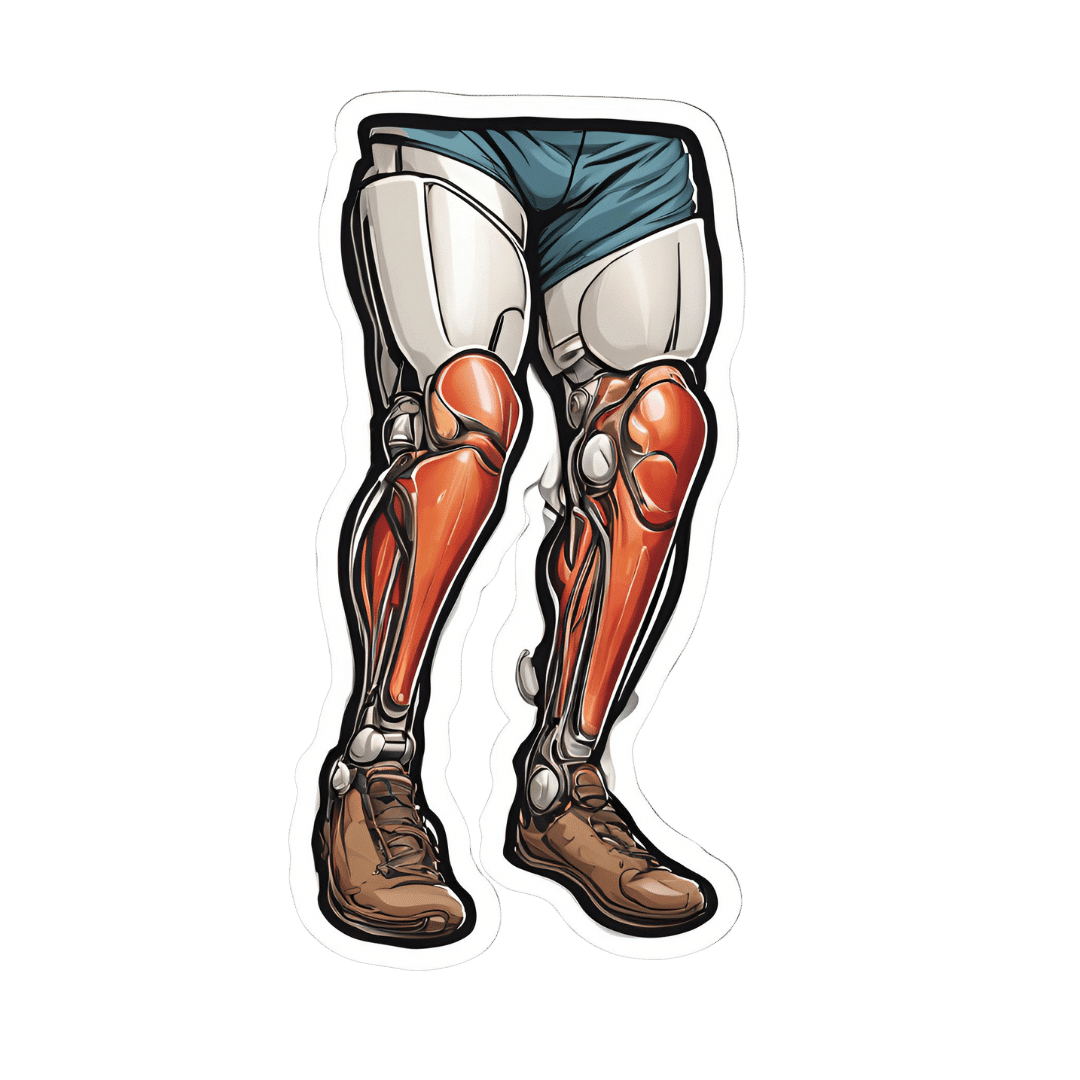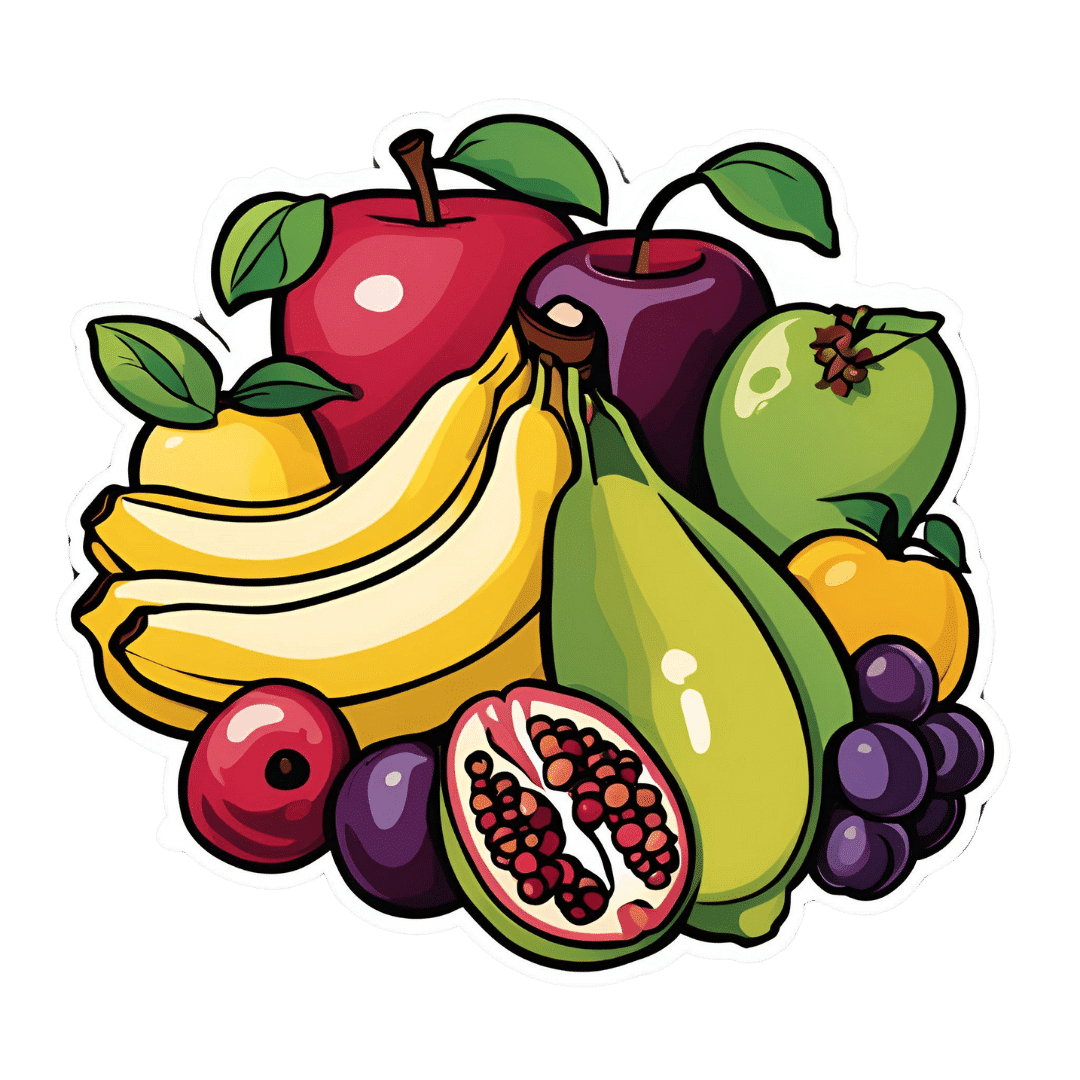
“Skinny Fat” Explained (& How To Fix It)
10almonds is reader-supported. We may, at no cost to you, receive a portion of sales if you purchase a product through a link in this article.
“Skinny fat” is a term you may have seen floating around social media. It describes people who have a low body weight but a high body fat percentage, often resulting in flabby appearance despite being within a weight range considered healthy. Many try dieting and exercising, only to find that neither work.
This video explains what’s going wrong, and how to fix it:
Diet & exercise won’t work if it’s not right
This problem occurs because common weight-loss approaches, such as restrictive dieting and excessive cardio, fail to improve body composition:
- Restrictive dieting reduces both fat and lean mass, keeping the body fat percentage unchanged
- Cardio burns some calories but the underlying metabolic issue hasn’t meaningfully changed, so any loss will be temporary (and most of any immediate loss will be water weight, anyway)
The key to overcoming skinny fat is resistance training. Lifting weights or doing bodyweight exercises helps build muscle, which not only lowers body fat percentage (by simple mathematics; add more muscle and the percentages of other things must go down even if the total amount is the same) and improves overall definition, which is something most people consider nice. However, the real value here is that it actually addresses the underlying metabolic issue—because muscle costs calories to maintain, one’s basal metabolic rate will now be faster, even when you’re sleeping.
This then becomes… Not quite a self-sustaining system, because you do have to still eat well and continue to do resistance training, but your body will be doing most of the work for you, and you’ll find it’s a lot easier to maintain a healthy body composition than to get one in the first place, for exactly the metabolic reason we described.
For more on all of this, enjoy:
Click Here If The Embedded Video Doesn’t Load Automatically!
Want to learn more?
You might also like:
Visceral Belly Fat & How To Lose It ← this is a different, but adjacent issue (and very important for avoiding metabolic disease risks)
Take care!
Don’t Forget…
Did you arrive here from our newsletter? Don’t forget to return to the email to continue learning!
Recommended
Learn to Age Gracefully
Join the 98k+ American women taking control of their health & aging with our 100% free (and fun!) daily emails:
-
“You Just Need to Lose Weight” And 19 Other Myths About Fat People – by Aubrey Gordon
10almonds is reader-supported. We may, at no cost to you, receive a portion of sales if you purchase a product through a link in this article.
We’ve previously reviewed another book by this author, “What We Don’t Talk About When We Talk About Fat”, and this time, she’s doing some important mythbusting.
The titular “you just need to lose weight” is a commonly-taken easy-out for many doctors, to avoid having to dispense actual treatment for an actual condition. Whether or not weight loss would help in a given situation is often immaterial; “kicking the can down the road” is the goal.
Most of the book is divided into 20 chapters, each of them devoted to debunking one myth. Think of it like 10almonds’ “Mythbusting Friday” edition (indeed, we did one about obesity), but with an entire book, and as much room as she needs to provide much more detail than we can ever get into in a single article.
And far from being a mere polemic, she does indeed provide that detail—this is clearly a very well-researched book, above and beyond the author’s own personal experience. Further, all the key points are illustrated and articulated clearly, making the book’s ideas very comprehensible.
The style is pop-science, but with frequent bibliographical references for relevant sources.
Bottom line: for some readers, this book will come as a great validation; for others, it may be eye-opening. Either way, it’s a very worthwhile read.
Share This Post
-
How To Grow In Comfort
10almonds is reader-supported. We may, at no cost to you, receive a portion of sales if you purchase a product through a link in this article.
How To Grow (Without Leaving Your Comfort Zone)
“You have to get out of your comfort zone!” we are told, from cradle to grave.
When we are young, we are advised (or sometimes more forcefully instructed!) that we have to try new things. In our middle age, we are expected to be the world’s greatest go-getters, afraid of nothing and always pushing limits. And when we are old, people bid us “don’t be such a dinosaur”.
It is assumed, unquestioned, that growth can only occur through hardship and discomfort.
But what if that’s a discomforting lie?
Butler (2023) posited an idea: “We never achieve success faster and with less effort than when we are in our comfort zone”
Her words are an obvious callback to the ideas of Csikszentmihalyi (1970) in the sense of “flow”, in the sense in which that word is used in psychology.
Flow is: when a person is in a state of energized focus, full involvement, and enjoyment of an activity.
As a necessary truth (i.e: a function of syllogistic logic), the conditions of “in a state of flow” and “outside of one’s comfort zone” cannot overlap.
From there, we can further deduce (again by simple logic) that if flow can be found, and/but cannot be found outside of the comfort zone, then flow can only be found within the comfort zone.
That is indeed comforting, but what about growth?
Imagine you’ve never gone camping in your life, but you want to get outside of your comfort zone, and now’s the time to do it. So, you check out some maps of the Yukon, purchase some camping gear, and off you go into the wilderness. In the event that you survive to report it, you will indeed be able to say “it was not comfortable”.
But, did growth occur? Maybe, but… it’s a folly to say “what doesn’t kill us makes us stronger” as a reason to pursue such things. Firstly, there’s a high chance it may kill us. Secondly, what doesn’t kill us often leaves us incredibly weakened and vulnerable.
When Hannibal famously took his large army of mostly African mercenaries across the Alps during winter to march on Rome from the other side, he lost most of his men on the way, before proceeding to terrorize Northern Italy convincingly with the small remainder. But! Their hard experience hadn’t made them stronger; it had just removed the weaker soldiers, making the resultant formations harder to break.
All this to say, please do not inflict hardship and discomfort and danger in the hopes it’ll make you stronger; it will probably do the opposite.
But…
If, instead of wilderness trekking in the Yukon…
- You start off with a camper van holiday, then you’ll be taking a fair amount of your comfort with you. In effect, you will be stretching and expanding your comfort zone without leaving it.
- Then maybe another year you might try camping in a tent on a well-catered camping site.
- Later, you might try “roughing it” at a much less well-catered camping site.
- And so on.
Congratulations, you have tried new things and undergone growth, taking your comfort zone with you all the way!
This is more than just “easing yourself into” something
It really is about taking your comfort with you too. If you want to take up running, don’t ask “how can I run just a little bit first” or “how can I make it easier” (well, feel free to ask those things too, but) ask yourself: how can I bring my comfort with me? Comfortable shoes, perhaps, an ergonomic water bottle, shade for your head, maybe.
❝Any fool can rough it, but a good soldier can make himself comfortable in any circumstances❞
~ British Army maxim
This goes for more than just physical stuff, too
If you want to learn a new skill, the initial learning curve can be anxiety-inducing, especially if you are taking a course and worried about keeping up or “not being good enough”.
So, “secretly” study in advance, at your leisure, get yourself a head start. Find a degree of comfort in what you’ve learned so far, and then bring that comfort with you into your entry-level course that is now less intimidating.
Discomfort isn’t a badge of honor (and impedes growth)
Take that extra rest stop on the highway. Bring your favorite coffee with you. Use that walking stick, if it helps.
Whatever it takes to bring your comfort with you, bring it.
Trust us, you’ll get further that way.
Share This Post
-
What Nobody Teaches You About Strengthening Your Knees
10almonds is reader-supported. We may, at no cost to you, receive a portion of sales if you purchase a product through a link in this article.
Strengthening unhappy knees can seem difficult, because many obvious exercises like squats may hurt, and can feel like they are doing harm (and if your knees are bad enough, maybe they are; it depends on many factors). Here’s a way to improve things:
The muscle nobody talks about
Well, not nobody. But, it’s a muscle that’s rarely talked about; namely, the tibialis anterior.
It plays a key role in decelerating knee motion—in other words, the movement that hurts if you have bad knees. It’s essential for absorbing shock during activities like walking, climbing stairs, and stepping off curbs
So, of course, strengthening this muscle supports knee health.
The exercise this video recommends for strengthening it involves leaning against a wall with feet about a foot away (closer feet make it easier, further makes it harder). Note, this is a lean, not a “Roman chair”.
The exercise involves squeezing the quadriceps, lifting toes toward the nose, and engaging the tibialis anterior muscle. If you’re wondering what to do with your hands, they can be held out with palms open to work on posture, or hanging by the sides. Do this for about 1½–2 minutes.
For more on all this, plus a visual demonstration, enjoy:
Click Here If The Embedded Video Doesn’t Load Automatically!
Want to learn more?
You might also like to read:
When Bad Joints Stop You From Exercising (5 Things To Change)
Take care!
Share This Post
Related Posts
-
7 Fruits Every Senior Should Eat Today (And Why)
10almonds is reader-supported. We may, at no cost to you, receive a portion of sales if you purchase a product through a link in this article.
What will you prioritize in the new year?
Fruits to enjoy regularly
The 7 fruits recommended for seniors in this video are:
Apples
- Rich in soluble fiber (pectin) for lowering LDL cholesterol.
- Contains phytochemicals such as quercetin and other polyphenols that reduce inflammation and support heart health.
- High in vitamin C for immunity, skin elasticity, and joint health.
Bananas
- Natural energy boost from carbohydrates.
- High in potassium for regulating blood pressure, fluid balance, and preventing muscle cramps.
- Supports cardiovascular health and muscle function.
Avocados
- Rich in monounsaturated fats to improve cholesterol levels.
- High in potassium for blood pressure regulation.
- Contains vitamins E and K for brain health and bone density.
Grapes
- Hydrating and rich in antioxidants like resveratrol, which supports circulation and reduces inflammation.
- Contain vitamins C and K for immunity and bone health.
Plums
- Natural laxative with high fiber and sorbitol for digestive health.
- Rich in potassium and vitamin K for bone density and reducing osteoporosis risk.
- Contain polyphenols for reducing inflammation and supporting cognitive health.
Pomegranates
- Anti-inflammatory and antioxidant-rich (especially punicalagins and anthocyanins).
- Supports heart health, improves cholesterol levels, and promotes brain health.
- May help inhibit cancer cell growth in specific types.
Kiwi
- High in vitamin C to boost immunity.
- Rich in fiber and enzymes for digestive health.
- Low glycemic index, suitable for blood sugar management.
10almonds note: a lot of those statements can go for a lot of fruits, but those are definitely high on the list for the qualities mentioned!
For more on all the above, enjoy:
Click Here If The Embedded Video Doesn’t Load Automatically!
Want to learn more?
You might also like to read:
Top 8 Fruits That Prevent & Kill Cancer ← there are two fruits that appear on both lists!
Take care!
Don’t Forget…
Did you arrive here from our newsletter? Don’t forget to return to the email to continue learning!
Learn to Age Gracefully
Join the 98k+ American women taking control of their health & aging with our 100% free (and fun!) daily emails:
-
Is A Visible Six-Pack Obtainable Regardless Of Genetic Predisposition?
10almonds is reader-supported. We may, at no cost to you, receive a portion of sales if you purchase a product through a link in this article.
Have a question or a request? We love to hear from you!
In cases where we’ve already covered something, we might link to what we wrote before, but will always be happy to revisit any of our topics again in the future too—there’s always more to say!
As ever: if the question/request can be answered briefly, we’ll do it here in our Q&A Thursday edition. If not, we’ll make a main feature of it shortly afterwards!
So, no question/request too big or small 😎
❝Is it possible for anyone to get 6-pack abs (even if genetics makes it easier or harder) and how much does it matter for health e.g. waist size etc?❞
Let’s break it down into two parts:
Is it possible for anyone to get 6-pack abs (even if genetics makes it easier or harder)?
Short answer: no
First, a quick anatomy lesson: while “abs” (abdominal muscles) are considered in the plural and indeed they are, what we see as a six-pack is actually only one muscle, the rectus abdominis, which is nestled in between other abdominal muscles that are beyond the scope of our answer here.
The reason that the rectus abdominis looks like six muscles is because there are bands of fascia (connective tissue) lying over it, so we see where it bulges between those bands.
The main difference genes make are as follows:
- Number of fascia bands (and thus the reason that some people get a four-, six-, eight-, or rarely, even ten-pack). Obviously, no amount of training can change this number, any more than doing extra bicep curls will grow you additional arms.
- Density of muscle fibers. Some people have what has been called “superathlete muscle type”, which, while prized by Olympians and other athletes, is on bodybuilding forums less glamorously called being a “hard gainer”. What this means is that muscle fibers are denser, so while training will make muscles stronger, you won’t see as much difference in size. This means that size for size, the person with this muscle type will always be stronger than someone the same size without it, but that may be annoying if you’re trying to build visible definition.
- Twitch type of muscle fibers. Some people have more fast-twitch fibers, some have more slow-twitch fibers. Fast-twitch fibers are better suited for visible abs (and, as the name suggests, quick changes between contracting and relaxing). Slow-twitch fibers are better for endurance, but yield less bulky muscles.
- Inclination to subcutaneous fat storage. This is by no means purely genetic; hormones make the biggest difference, followed by diet. But, genes are an influencing factor, and if your body fat percentage is inclined to be higher than someone else’s, then it’ll take more work to see muscle definition under that fat.
The first of those items is why our simple answer is “no”; because some people are destined to, if muscle is visible, have a four-, eight, or (rarely) ten-pack, making a six-pack unobtainable.
It’s worth noting here that while a bigger number is more highly prized aesthetically, there is literally zero difference healthwise or in terms of performance, because it’s nothing to do with the muscle, and is only about the fascia layout.
The density of muscle fibers is again purely genetic, but it only makes things easier or harder; this part’s not impossible for anyone.
The inclination to subcutaneous fat storage is by far the most modifiable factor, and the thus most readily overcome, if you feel so inclined. That doesn’t mean it will necessarily be easy! But it does mean that it’s relatively less difficult than the others.
How much does it matter for health, e.g. waist size etc?
As you may have gathered from the above, having a six-pack (or indeed a differently-numbered “pack”, if that be your genetic lot) makes no important difference to health:
- The fascia layout is completely irrelevant to health
- The muscle fiber types do make a difference to athletic performance, but not general health when at rest
- The subcutaneous fat storage is a health factor, but probably not how most people think
Healthy body fat percentages are (assuming normal hormones) in the range of 20–25% for women and 15–20% for men.
For most people, having clearly visible abs requires going below those healthy levels. For most people, that’s not optimally healthy. And those you see on magazine covers or in bodybuilding competitions are usually acutely dehydrated for the photo, which is of course not good. They will rehydrate after the shoot.
However, waist size (especially as a ratio, compared to hip size) is very important to health. This has less to do with subcutaneous fat, though, and is more to do with visceral belly fat, which goes under the muscles and thus does not obscure them:
Visceral Belly Fat & How To Lose It
One final note: fat notwithstanding, and aesthetics notwithstanding, having a strong core is very good for general health; it helps keeps one’s internal organs in place and well-protected, and improves stability, making falls less likely as we get older. Additionally, having muscle improves our metabolic base rate, which is good for our heart. Abs are just one part of core strength (the back being important too, for example), but should not be neglected.
Top-tier exercises to do include planks, and hanging leg raises (i.e. hang from some support, such as a chin-up bar, and raise your legs, which counterintuitively works your abs a lot more than your legs).
Take care!
Don’t Forget…
Did you arrive here from our newsletter? Don’t forget to return to the email to continue learning!
Learn to Age Gracefully
Join the 98k+ American women taking control of their health & aging with our 100% free (and fun!) daily emails:
-
Dangers Of Root Canals And Crowns, & What To Do Instead
10almonds is reader-supported. We may, at no cost to you, receive a portion of sales if you purchase a product through a link in this article.
Dr. Michelle Jorgensen, a dentist, tells us that it’s a lot rarer than people think to actually need a crown or a root canal; there are ways of avoiding such:
The tooth, the whole tooth, and nothing but the tooth?
First, some of the problems with the treatments that are most popular, especially in the US:
Problems with root canals:
- Involves cleaning and filling the tooth’s main canal but leaves microtubules that can harbor dead tissue and attract bacteria.
- This can lead to infections, often undetected for a long time due to the nerve removal, potentially harming overall health and weakening the tooth.
- Root canals often result in brittle teeth that can break, necessitating crowns.
And then…
Problems with crowns:
- A crown requires significant removal of tooth structure (up to 1.5 mm of enamel), making the tooth more vulnerable and sensitive.
- Crowns can also lead to new cavities underneath due to weak bonding to dentin.
- The cycle often leads from a healthy tooth to fillings, crowns, root canals, and eventual extraction (and then, perhaps, an implant in its place). That’s great for the dentist, but not so great for you.
Biomimetic dentistry the exciting name currently being used for what has been more prosaically called “conservative restorative dentistry”, which in turn has also been known by other names in recent decades, and its goal is to strengthen and preserve natural teeth as much as possible.
Methods it uses:
- Treats affected but still living teeth with non-invasive procedures.
- Uses ozone treatment to kill bacteria in deep cavities, avoiding direct nerve exposure.
- Applies conservative partial restorations like onlays instead of full crowns.
Benefits of this approach:
- Preserves enamel, minimizes trauma, and reduces the risk of tooth death.
- Maintains long-term tooth structure and health.
- 95% success rate in saving affected teeth without resorting to root canals.
In short, Dr. Jorgensen says that 60–80% of traditional crowns and root canals can be avoided. Which is surely a good thing.
For more on all of this, enjoy:
Click Here If The Embedded Video Doesn’t Load Automatically!
Want to learn more?
You might also like:
Tooth Remineralization: How To Heal Your Teeth Naturally
Take care!
Don’t Forget…
Did you arrive here from our newsletter? Don’t forget to return to the email to continue learning!
Learn to Age Gracefully
Join the 98k+ American women taking control of their health & aging with our 100% free (and fun!) daily emails:







